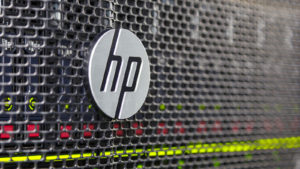7 Sorry Blue-Chip Stocks to Sell in August Before It’s Too Late
Blue-chip stocks are considered a more conservative way to invest, relative to more speculative names like early-stage growth stocks or penny stocks. However, that doesn’t mean owning them offers a guaranteed path to solid returns.
At any given time, there are stocks in the blue-chip category that are not worth owning, at all. In some cases, a blue-chip can fall into the “stocks to sell” category, due to company and/or industry-specific headwinds that have the potential to negatively affect future returns. In other cases, valuation can be the issue. While blue-chips can typically command and sustain a premium valuation, sometimes the market can go overboard, with these blue-chip names experiencing multiple compression once investors come to their senses.
Some blue-chips are in long-term secular decline. With their fundamentals worsening, buying into them is not worthwhile, even if, on paper, factors like a low valuation and/or high dividend yield make them seem like an appealing opportunity. That being said, investors should avoid. these seven below stocks. Each may have a history of steady returns and dividends. However, now is not the time to own any of them.
Boeing (BA)

Shares in aerospace industry leader Boeing (NYSE:BA) have performed strongly over the past year. With aircraft deliveries climbing, and the company’s revenue continuing to bounce back toward pre-pandemic levels, investors have become increasingly confident a return to profitability is within sight. Yet while the company may keep making a comeback, who’s to say this isn’t already reflected in the valuation of BA stock? Based on sell-side forecasts, shares today trade for around 42.6 times next year’s earnings, and around 24.5 times estimated earnings for 2025.
BA could sustain this valuation, if results meet expectations. However, the sell-side has been trimming its future earnings forecasts in recent months. Also, if results end up falling short of expectations, this could cause a big correction for Boeing shares. That said, it may be best to consider this one of the blue-chip stocks to sell for now.
Disney (DIS)

As I discussed previously, numerous headwinds make me bearish on Disney (NYSE:DIS). These issues range from recent film releases that have flopped at the box office, to the challenges the company is experiencing turning streaming into a strong of a profit center. Sure, some may argue that these issues are already baked into the valuation of DIS stock. Shares today trade for 23.3 times forward earnings, which is reasonable relative to other blue-chip stocks. Disney also has the potential for continued earnings improvement as the company makes progress cutting costs.
However, cost cuts may only go so far. Efforts to improve results for its streaming unit, including cutting back on content, and raising prices, could backfire, possibly heightening recent subscriber growth issues. It may be too early to say things are starting to look up for the “House of Mouse.”
HP (HPQ)

HP (NYSE:HPQ) is one of the blue-chip stocks to sell now, even if you find the PC maker attractive as a hard-hit contrarian buy. That is, the stock sports not just a low valuation (9.2 times forward earnings), but a moderately-sized dividend (3.35% forward yield) to boot.
However, while HPQ stock may on the surface seem like good value, a closer look suggests the stock is more of a value trap today. Shares have been in “value trap territory” before. For instance, leading up to the pandemic, as well as during the lockdown phase of the virus.
It was only the post-pandemic boom in PC demand that enabled this tech value stock to briefly become a strong performer again. Even if the impact of a recession is priced-into HP today, the prospect of a slow earnings recovery points to middling returns (at best) from here.
IBM (IBM)

IBM (NYSE:IBM) may be one of the quintessential blue-chip stocks, but that doesn’t necessarily make it a stock worth buying today. Yes, take a look at recent headlines, and it seems that the company has the potential to capitalize on tech trends like artificial intelligence (or AI).
Still, while the company may have an AI growth catalyst, it will likely need to have a tremendous impact on profitability for it to move the needle for IBM stock. Although shares seem cheap, at just 14.7 times forward earnings, this multiple is likely reasonable, given the company’s prospects of having just single-digit earnings growth in the years ahead.
IBM does still have a nice dividend (4.72% forward yield). However, IBM’s payout ratio is nearing 75%, and slow earnings growth signals slow dividend growth going forward as well. Likely to produce underwhelming returns, skip out on “Big Blue.”
3M (MMM)

3M (NYSE:MMM) is a blue-chip that I have long considered one of the top stocks to sell. A big reason for this is the large amount of legal liabilities that continue to hang over the industrial conglomerate. During June, legal headwinds appeared to be easing for MMM stock. That month, 3M offered to pay at least $10.3 billion to settle claims related to PFAS (aka “forever chemicals”) contamination. However, attorneys general from 22 states oppose the deal, saying it’s enough to compensate for the environmental damage.
Also, 3M is not quite yet out of the woods with its liabilities stemming from the past sale of military earplugs. Meanwhile, while legal headwinds persist, growth challenges continue for the company. MMM’s high dividend yield (5.95%) remains a bright spot, but as a Seeking Alpha commentator argued last month, low-growth and the litigation issues point to an eventual dividend cut.
AT&T (T)

AT&T (NYSE:T) is another of the blue-chip stocks with a big dividend, yet has produced poor total returns due to share price declines. That said, I can see why some may think now’s the time to go long on “Ma Bell.”
The company recently reported strong quarterly results. Earnings came in ahead of expectations. The fact billionaire Ray Dalio’s hedge fund, Bridgewater Associates, has bought T stock, has also added to its appeal lately. However, you may want to think twice before diving into AT&T, in the hopes shares are poised to turn a corner.
Despite the earnings beat, subscriber growth fell short of expectations last quarter. Concerns like AT&T’s high debt, weak projected earnings growth, and the risk of another dividend cut, continue. Keep in mind too that Bridgewater’s position in T shares only makes up 0.2% of its overall portfolio.
Walgreens Boots Alliance (WBA)

Walgreens Boots Alliance (NASDAQ:WBA) is a Dow Jones Industrial Average component I used to be bullish on, but now admit is now worth selling, given the questionable chances that the pharmacy giant’s shares shake off their “value trap” status.
Yes, WBA stock remains cheap. Shares today trade for only 6.8 times earnings. The stock also continues to sport a very high dividend (6.81%). Not only that, with 46 years of consecutive dividend growth, this “dividend aristocrat” is just four years away from becoming a “dividend king.”
But as the company continues to struggle to grow earnings post-pandemic, the stock is likely to continue floundering. While perhaps less at risk of a dividend cut than other “Dogs of the Dow” like 3M, returns from a steady payout may fail to outweigh further price declines. On a longer time frame, other blue-chips are likely to produce stronger total returns.
On the date of publication, Thomas Niel did not hold (either directly or indirectly) any positions in the securities mentioned in this article. The opinions expressed in this article are those of the writer, subject to the InvestorPlace.com Publishing Guidelines.

